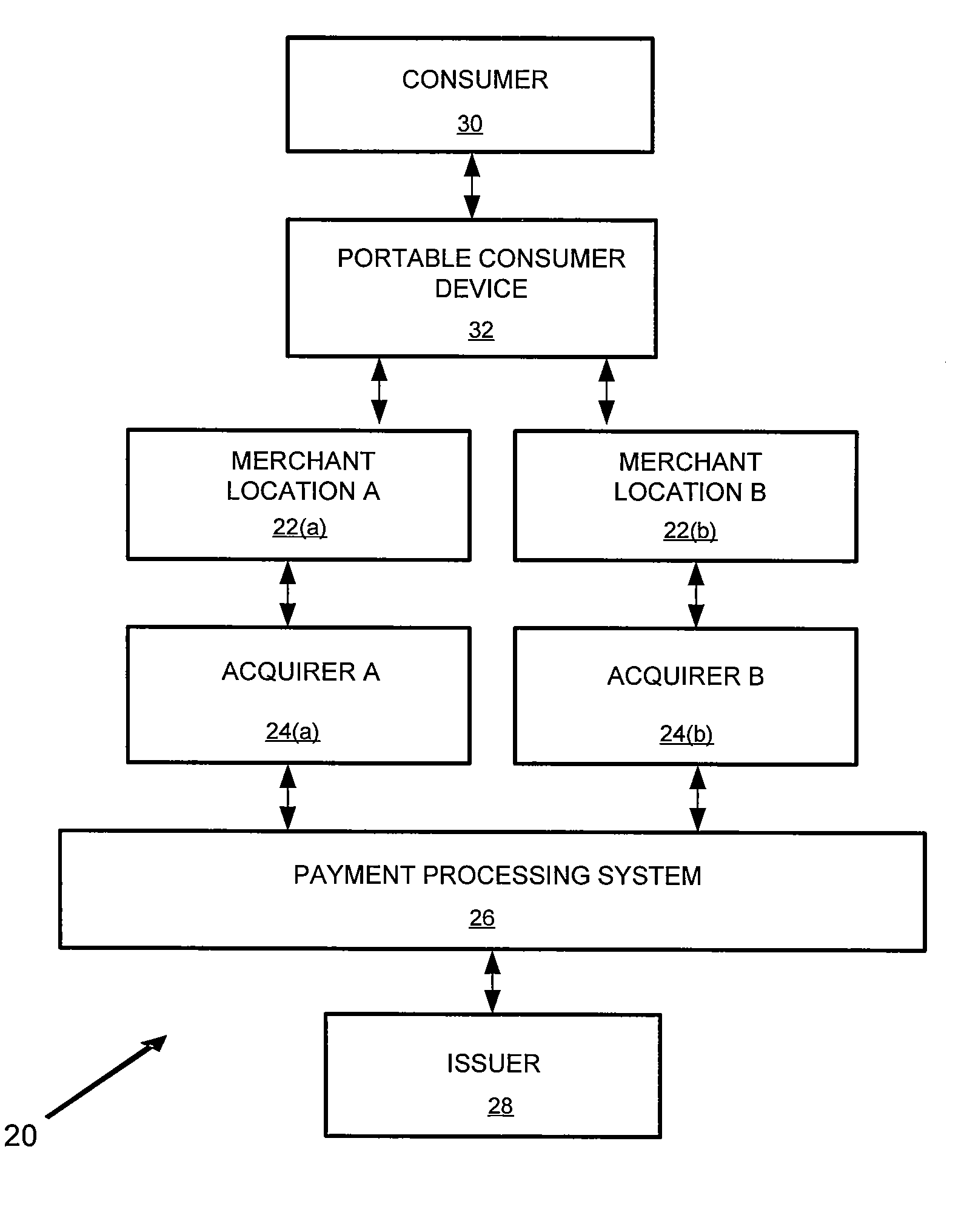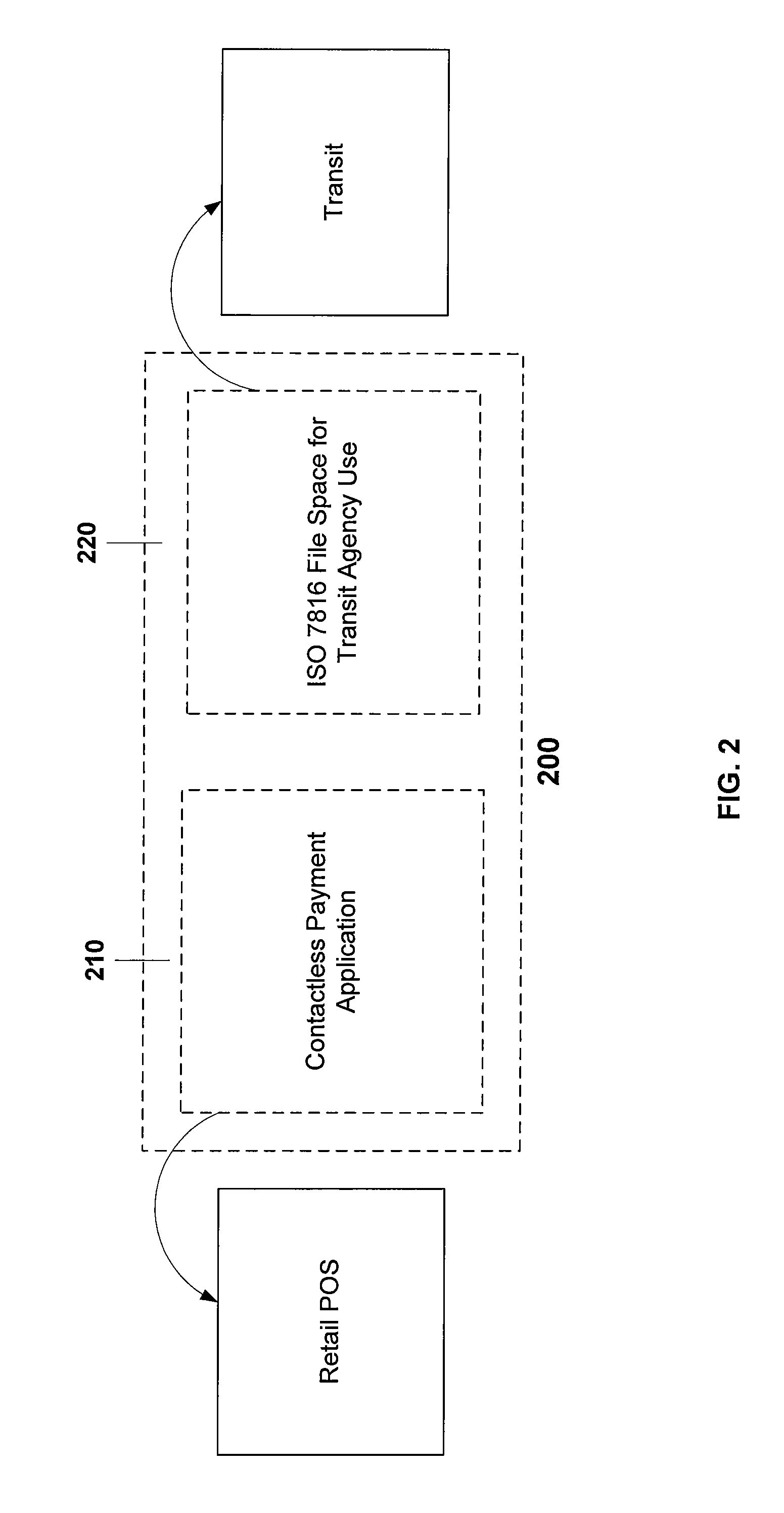Bank issued contactless payment card used in transit fare collection
a contactless payment and transit fare technology, applied in the field of contactless payment cards, can solve the problems of ineffective transit fare payment and collection process, significant problem, and inefficient requirements
- Summary
- Abstract
- Description
- Claims
- Application Information
AI Technical Summary
Benefits of technology
Problems solved by technology
Method used
Image
Examples
Embodiment Construction
[0029]The present invention is directed to an architecture and / or design for a dual use contactless smart card or payment device that may be used to conduct commerce transaction payments and to obtain access to a transit system or other venue. The contactless smart card or payment device may thus combine the capabilities for retail point of sale payment and transit system access and use. This permits the smart card or device to function as a payment mechanism (such as a credit / debit card) and as a transit system access card (i.e., as both a commerce transaction and access transaction device). In such an embodiment, the card may utilize a dynamic memory storage element. In such a storage element, the memory may be partitioned to include a section for storage of payment related functions, and a section partitioned for transit and other applications. The transit application may have preloaded data for one of or more transit agencies and have the ability to accept data for other agencie...
PUM
 Login to View More
Login to View More Abstract
Description
Claims
Application Information
 Login to View More
Login to View More - R&D
- Intellectual Property
- Life Sciences
- Materials
- Tech Scout
- Unparalleled Data Quality
- Higher Quality Content
- 60% Fewer Hallucinations
Browse by: Latest US Patents, China's latest patents, Technical Efficacy Thesaurus, Application Domain, Technology Topic, Popular Technical Reports.
© 2025 PatSnap. All rights reserved.Legal|Privacy policy|Modern Slavery Act Transparency Statement|Sitemap|About US| Contact US: help@patsnap.com



